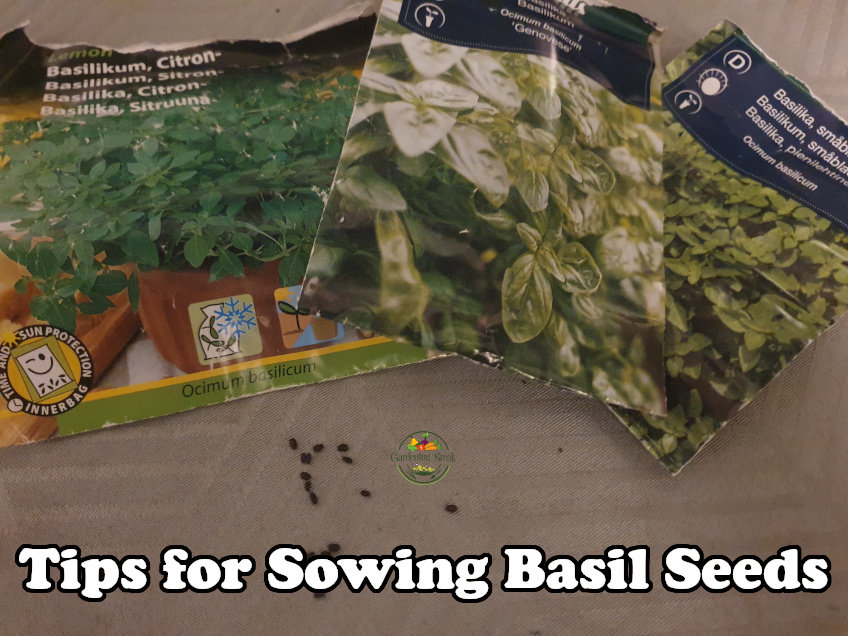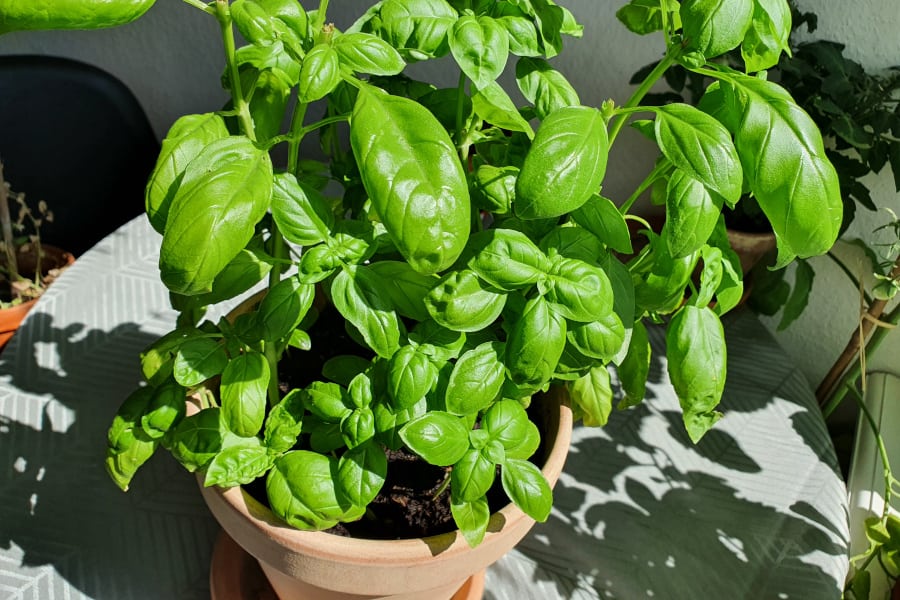
You can sow basil seeds directly in the ground or a large pot, or you can germinate them in small containers and then transplant them into the ground or to a larger pot later. Both ways can work really well, but there are situations where one is better than the other.
You don’t have to soak basil seeds before you sow them. This is a good idea with some types of seeds, but I never do it with basil seeds and they always germinate just fine. This means that you can start growing your basil right now, which is always exciting.
I want to recommend two ways of sowing basil seeds so you can pick the one that fits your preferences.
Best Way to Sow Basil Seeds in Pots for Big and Bushy Plants
The first way I recommend for growing basil from seed is really easy and is essentially just to sow liberally. This is my favorite way as it results in some big and super bushy basil plants. Here is how:
The best way to grow a dense and bushy basil plant is to spread several seeds all over the top of the soil and cover it with half an inch (about 1 cm) of soil, and sprinkle water all over it. Aim for a couple of seeds per square inch (about 1 per square cm). This works for both pots, raised beds, and directly in the ground.
You don’t have to use that many seeds, but I have experienced that you get the nicest looking, bushiest, and most productive bail plants if you sow densely. Here is a photo of one of mine.

If you sow your basil like this, you should use a relatively large pot, because the many plants will all fight for root space in the soil, so a small pot could quickly cause them to become rootbound.
Some people prefer to grow their plants in rows, and I have a slightly different recommendation for that.
How to Sow Basil Seeds in Rows
The best way to grow basil in rows is to poke several holes that are about ¼ inch (or about 0.5 cm) deep in a row with about 12 inches (30 cm) of space between each hole. Then, place 3-5 seeds in each hole, cover them with a thin layer of soil, and then water them.
If you want to grow basil in a row as described above, I recommend starting the plants indoors for a higher survival rate. Here is how I do it.
Sow about 3-5 seeds in a small 2×2 inch (5×5 cm) container for each cluster or group of basil plants you want in your row and water them lightly.
Transplant them outside after about a month and place them in a row with 12 inches (30 cm) between each cluster or group. I explain how to transplant basil on this link.
Best Time to Sow Basil Seeds
Basil plants love warm temperatures and lots of sunshine, so be careful not to plant them too early as they cannot tolerate frost and need enough sunlight to grow.
If you are planning on growing your basil outside, it is important that there is no risk of frost. You should wait about 2-3 weeks after the last frost in the spring to be sure since basil seeds and seedlings are very fragile when it comes to frost.
I prefer to sow my basil seeds indoors in small biodegradable seed starter pots a few weeks after the last frost in the spring. In my experience, the plants have a much higher survival rate if you start them indoors and then transplant them outside a few weeks later (no earlier than a month after the last frost).
A good trick I use and recommend if you want to maximize your basil yield is to sow new basil plants continuously throughout the spring and summer.
I like to sow a few new seeds every 1-2 weeks throughout the growing season. You can sow new basil plants all the way until late summer, but don’t expect the later plants to get as big as the earlier ones since they don’t have as much time to grow before the first frost.
Read My Complete Guide to Growing and Caring for Basil
I have written a thorough guide where I cover all parts of growing your own basil including choosing a variety, sowing the seeds, the best growing conditions, pruning, propagation, harvesting, storing, solving various problems, and a lot more. You can find the article on this link.

